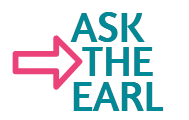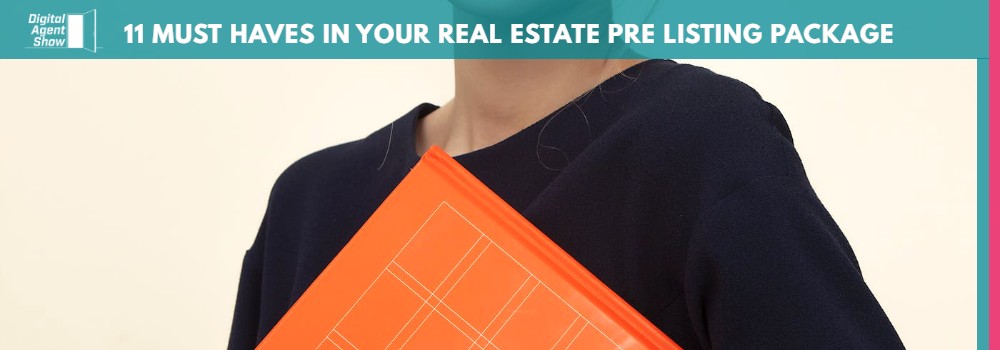A unique and personalized real estate pre-listing package is necessary to impress a prospective homeowner seller. While the package will include a wealth of real estate information on the local market, it also has unique properties that differ from each real estate agent. As a real estate agent, it is crucial to have a pre-listing package that sets you apart from the competition to win a listing.
Your real estate pre-listing package needs to be engaging, visually appealing, and useful to the client as a reflection of your business. It is a chance to showcase your achievements and show off your expertise to gain your client’s trust ultimately.
Since a pre-listing package is crucial to winning business, it is important to understand the sections that make up a solid presentation. It requires more than some testimonials and stock photos from the internet. The rest of this article will take a look at the important details to have in your pre-listing real estate package to win more business and ultimately impress a seller.
What Is a Pre-Listing Package?
In real estate, a pre-listing package is a pitch book related to the sale of the seller’s property. Real estate agents present this book to homeowners that plan on selling their property. It provides a general overview of the real estate selling process and information pertinent to the real estate agent.
The package is delivered before the actual property is posted on property listing websites. It usually includes various sections, such as a brief biography of the agent and statistics from the local real estate marketplace.
Having a pre-listing package lets agents stand out before the in-person listing consultation at the actual property. Investing in a personalized and visually stunning presentation that is professionally put together reflects positively on your business. This sets you apart from other agents that simply deliver a short brochure or a one-page flyer.
The pre-listing package can either be in digital format and sent via email or a printed booklet to the client. Sometimes agents do both, as having a digital format can be accessed anywhere at any time and easily shared across digital channels. Personally dropping off a print and bound booklet feels more personalized and luxurious in today’s time, and clients will appreciate the white-glove experience too.
While pre-listing packages are structured differently depending on each real estate agent or brokerage, a few core topics need to be included in each book.
The following is a brief overview of 11 must-haves in your real estate pre-listing package:
- Background Introduction
- Professional Headshot & Portrait
- Local Real Estate Market Information
- Previous Experience & Testimonials
- Process Guide
- Marketing Strategy
- Marketing Samples
- Frequently Asked Questions (FAQ)
- Visuals and Infographics
- Contact Information
- Presentation
When putting together a pre-listing package, use information that is useful and relevant to your prospective client. Personalization is key in winning a pitch, so it might be worth hiring a local photographer to take some photos of some local landmarks that clients will recognize rather than using generic online clip art. These should support the goal of presenting you and your unique business.
Background Introduction
Include a brief professional biography of your real estate experience with some information about who you are as a person. Add any hobbies or charitable causes you are a part of to give a humanizing and personable touch. Your prospective client will be working with you on a stressful transaction for the next few months (if not longer), so it does not hurt to come across as a likable person.
If you are part of a team, include everyone’s biography in addition to your own. These can be any assistants or marketing personnel you work with closely. It is good to add information and the background of anyone who is a part of the team that the homeowner might interact with besides you.
Also, add a quick blurb about your real estate firm, such as when it was founded or the benefits of working with your brokerage. Include any information that assures homeowners that you are a part of a great team and firm.
Professional Headshot & Portrait
Your professional headshot or portrait should be included in the package to help the prospective client put a face to your name. As your professional headshot reflects who you are to the world, it is best to use a professional photographer that specializes in portrait photography that will work with you to get your best angle.
While you might think a headshot of your younger self might be better to use in your package (or even on social media), it is probably a better idea not to use it. When the prospective client meets you in person, they may not be able to recognize you because the photo does not reflect who you are and what you look like now. Try to avoid any circumstances where you mislead the client (even unintentionally), so keep your professional shots up to date.
While you might want to add a humanizing touch such as a creative background or a backdrop, try not to make it a focal point or draw too much attention as it can be distracting. The focus should be on you.
Local Real Estate Market Information
Educating sellers about their local real estate market is essential in winning their trust as an agent. By using data-driven insights, you can back your opinion and assure that you are the real estate expert in the area.
While there are many sources online that provide pertinent real estate information and statistics, here are a few trustworthy options:
- Movoto: Shows an overview of the real estate market, in addition to a comparison to other nearby markets.
- Trulia: Offers a tab named “Local Info,” which provides local market trends.
- Realtor: Provides an overview of market trends each month, including list prices and a heatmap exploring days on market and list prices.
These local market data gives your prospective clients an idea of property prices, days on the market, and home sales in the community. While it is not to be taken as comparative market analysis, it is still a good idea to add in your package to set expectations.
In 2016, a survey from Zillow found that local market knowledge was considered an important attribute and the number 1 factor when retaining a real estate agent to work with.
Previous Experience & Testimonials
Outline your previous successful experience selling homes with client testimonials, including any direct quotes (with your client’s permission). Considering that approximately 72% of consumers state that positive testimonials and reviews help them trust a business more, it is beneficial to add this content to your package.
If a prospective client was referred to your business by a previous client, then the mutual connection is sure to have given you a glowing review. But for prospective clients with no frame of reference, it can be difficult for them to trust you and your business. However, approximately 88% of consumers trust the reviews online equally as much as personal recommendations. These testimonials really do make a huge difference!
This is an area where you can pick and choose the most glowing recommendations for the accomplishments you can highlight and discuss extensively. Try to put testimonials from homes around the price range or in the local area to make the prospective client feel more confident that you can do an equally amazing job to sell or help buy quickly.
Process Guide
Clients want to understand all the steps of the selling process and be fully informed of each phase. While it is best to discuss it in person so you can answer any questions that may come up, including a step-by-step guide that gives clients more confidence in your skills is also a good move.
Some other guides can include a checklist of tasks in preparing their home before listing the property on the marketplace or a timeline of steps it can take from pre-listing to closing. As a real estate agent, being transparent and having a detailed process assures clients that they are in good hands.
Traditional & Digital Marketing Footprint
Include a section that explains your strategy in marketing their property to ensure you get as many inquiries as possible on their home listing. For a traditional marketing strategy, this may include making phone calls to prospective buyers, mailing postcards, or holding open houses for viewings.
In today’s tech era, it is crucial to have a digital and social media marketing strategy as well. This can include commissioning a virtual tour, recording video walkthroughs, emailing flyers, or launching social media ad campaigns.
Include this in your package along with any social media handles you plan on using to publicize the listing. This may be your personal social media accounts, the brokerage or firm’s social media handles, and more.
Layout all the details so everyone is on the same page and understands that you will constantly be marketing their home to get it sold. There should also be a tentative timeline on how much time it will take to launch the campaign or get mailers sent out, so your clients are aware of any lead time to set expectations.
Marketing Samples
A great element to add to emphasize your marketing strategy section is to include samples of marketing collateral. Some samples you should consider including in your package are photos of open houses, signage hung out on lawns, flyers, or screenshots of any social media ad campaigns.
Show your prospective clients what you have done in the past that was successful in selling a home. Then, prove that you can implement these marketing campaigns and replicate successful results.
If you plan on hiring a home staging vendor to place furniture to make the property feel more lived in or luxurious, add a sample proposal from the vendor with photos from previous homes.
According to the National Association of Realtors, approximately 40% of buyers were more willing to travel to visit a staged home they found online. Since home staging is a great marketing tactic, make sure to add some samples to make prospective clients feel more open to this idea.
Along with professional photography of the premises, because of the COVID-19 pandemic, it is crucial to commission a virtual tour of homes, so people do not need to attend open houses if they do not feel comfortable enough to do so. Provide a sample link of the virtual tour so your prospective client can see for themselves what a virtual tour looks like.
These samples will also provide your prospective clients with a feel of how you will market their property to the public. Let your creativity shine or invest in a great graphic designer that can create beautiful marketing collateral.
Frequently Asked Questions (FAQ)
Your clients will most likely have many questions for you before or after your in-person consultation. Include a helpful FAQ section of frequently asked questions that you find clients ask often.
You may find it helpful to add a real estate glossary of industry terms that people are unaware of, especially for first-time sellers and buyers. This shows to the client that you have thought ahead to anticipate their every need.
Visuals and Infographics
Mix up your text by adding photos and infographics to demonstrate and explain any information. Considering that studies show that there is an approximately 82% increase in attention spans in readers using vibrant colored visuals, this is an important aspect to make your package visually engaging to your readers.
Pair long paragraphs of text with relevant images to help people remember, or remove paragraphs entirely and use infographics to explain pertinent information. Considering that nowadays, an average adult’s attention span is approximately 8 seconds, an infographic will help break down the lengthy text and make information memorable.
According to Xerox, because retention and learning are increased by approximately 78% with color, use color for key points for your prospective clients to recall important material from your pre-listing package. With this in mind, develop visually stunning flow chart information to address the procedures of selling a house or use unique fonts with illustrative icons to emphasize crucial sections.
Contact Information
This section is probably the most important part. People need to know how to contact you! Have a dedicated section that states your phone number, email address, and address. It might be helpful to add both an office phone number and your cell phone number if you go above and beyond regular working hours.
Being available might be one of the reasons that your clients prefer working with you. Add not only your company website but also your agent website and any social media handles such as LinkedIn to give your clients a complete picture.
For the tech-savvy, you can also include a QR code with your vCard with all your information. A QR code is a barcode that people can scan via their phone camera or a QR code reader app. This code can contain information such as a website URL link, or in this case, your contact details. There are many QR code generators available online, but you can also use this QR Code Generator to create your free QR code using your computer.
Presentation
Everyone knows that the first impression is the most important, and in fact, you have about 7 seconds to make a great impression. Walking in with a rumpled t-shirt and a stack of papers stapled together might show that you do not care about how you present yourself and are not taking the pre-listing assignment seriously.
If you plan on mailing your pre-listing package or dropping it off at the client’s house, consider investing in additional money to print in full color and bind the booklet professionally at your local printing store or printing franchises such as UPS, Kinkos, Staples, or Office Depot.
According to Xerox, color grabs people’s attention, making them glance at the material, and people are 55% more likely to pick up to read a fully colored piece of mail.
When sending a pre-listing package digitally, consider sending it as a PDF file format rather than as a Word document. The PDF file format is reliable, practical, and has universal support across devices. This means that no matter the browser or computer you have on hand, your digital PDF file will appear exactly the same on every device.
Conclusion
A pre-listing package contains important information about the real estate selling procedure. Demonstrate the fact you have replicated your success in the real estate market with your marketing strategy, your in-depth knowledge of the local real estate market condition, and the ability to guide clients through every step of the real estate buying or selling process.
All the information you include in the pre-listing package should work together to cohesively support your goal in presenting your unique value proposition to the prospective client.

But beyond providing this information, it is also a chance to show off your brand, highlight your achievements, and get prospective clients to trust in your skills while getting a feel for your personal character traits. Exude transparency, integrity, and the willingness to go the extra mile for your client.
Ultimately, your pre-listing package reflects you and your real estate business. So make it count, put some effort, and work to impress from the very first impression. Real estate is a very competitive industry, so create your pre-listing package to look as unique as possible while still providing valuable information to stand out from the competition.







